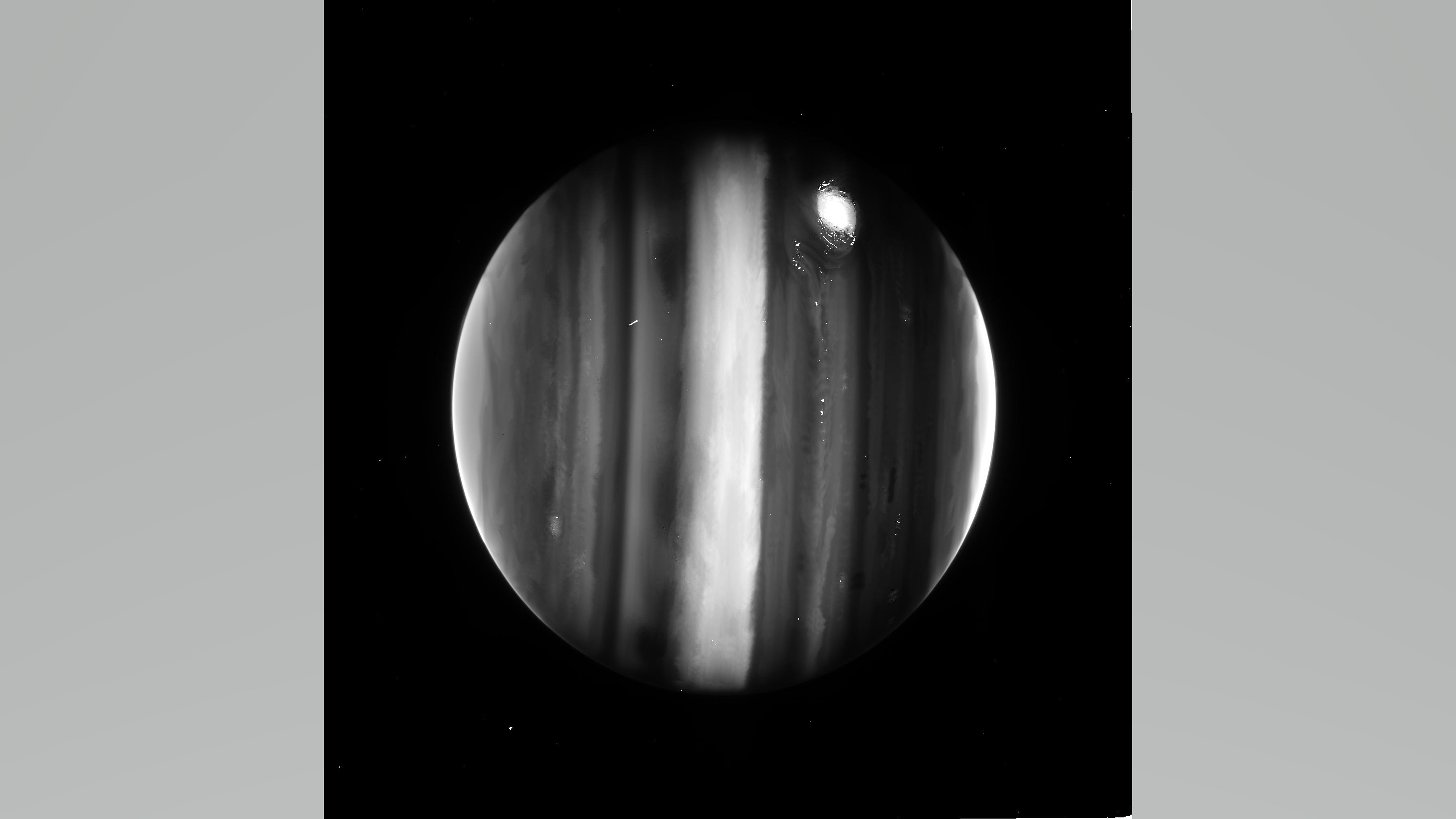Jupiter glows in new James Webb Space Telescope raw image

Jupiter always shines, even when seen sideways in unprocessed data.
Astronomers are busy poring through new data from the James Webb Space Telescope (nicknamed Webb or JWST) in a continuing rush to spot ever-more-distant galaxies. But the observatory is continuing to study plenty of objects closer to home.
Among the targets of those observations is Jupiter. NASA released a handful of early JWST images of the massive planet on July 14, but the telescope has continued to revisit the planet thanks to a program meant to demonstrate JWST's potential to study our own solar system as well as the distant universe.
Gallery: James Webb Space Telescope's 1st photos
And that potential is on display in a raw image snapped by the telescope's Near Infrared Camera (NIRCam) instrument on July 27, 2022, that highlights Jupiter's massive storm, famous the Great Red Spot, as well as bands in the planet's atmosphere.
And the image, along with Webb's other observations, are designed to help scientists understand that atmosphere, tackling tasks like characterizing its thermal structure and layers, as well as studying phenomena like winds and auroras.
To create the new image, NIRCam stared at Jupiter for nearly 11 minutes using what scientists call the F212N filter, which observes light that has a wavelength of 2.12 microns, about the length of a common bacterium. The filter earned its place on the observatory because scientists can use its data to study molecular hydrogen.
Breaking space news, the latest updates on rocket launches, skywatching events and more!
According to a preliminary schedule released by the Space Telescope Science Institute in Maryland, which operates JWST, the observatory's targets for next week include Jupiter's volcanic moon Io, the large asteroid Hygeia and the supernova remnants Cassiopeia A.
However, observation schedules are always subject to change. In addition, not all of JWST's data is being immediately made public; for much of its observations, the scientists who requested the data get special access for one year to facilitate their analysis.
Email Meghan Bartels at mbartels@space.com or follow her on Twitter @meghanbartels. Follow us on Twitter @Spacedotcom and on Facebook.

Meghan is a senior writer at Space.com and has more than five years' experience as a science journalist based in New York City. She joined Space.com in July 2018, with previous writing published in outlets including Newsweek and Audubon. Meghan earned an MA in science journalism from New York University and a BA in classics from Georgetown University, and in her free time she enjoys reading and visiting museums. Follow her on Twitter at @meghanbartels.
